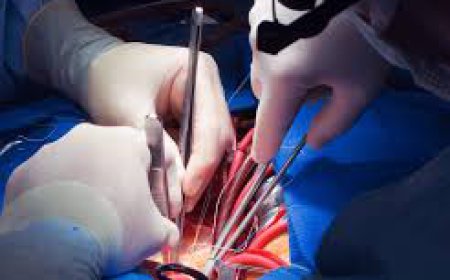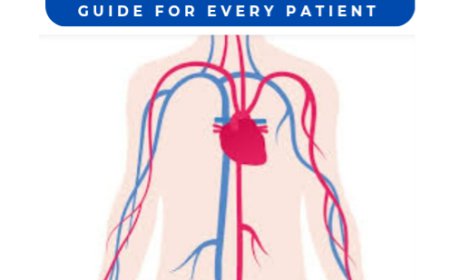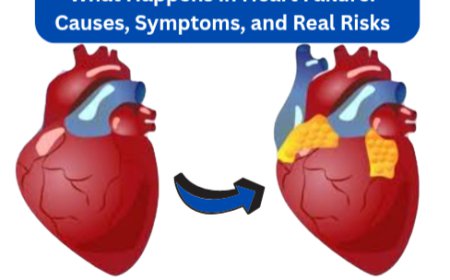Healing with Heart – A Surgeon’s Guide to Humane Patient Care
Healing with Heart – A Surgeon’s Guide to Humane Patient Care by Dr. Dhiren Shah

Healing with Heart – A Surgeon’s Guide to Humane
Patient Care
By Dr. Dhiren Shah, Senior Cardiac Surgeon, Marengo CIMS Hospital, Ahmedabad
1. The Philosophy of Compassionate Surgery
Surgical excellence extends far beyond technical skills—it is rooted in human connection, dignity, and emotional understanding. At the center of every operation lies a living, breathing individual who is likely navigating fear, vulnerability, and uncertainty. The true responsibility of a surgeon is not only to operate on the heart but also to care for the soul that carries it.
This guide shares foundational principles cultivated over decades of cardiac surgery experience, with an emphasis on compassion, clear communication, and kindness as essential elements of care.
2. The Pre-Surgical Relationship: Building Emotional Trust
A. Begin With Listening
The first consultation is not just clinical—it is emotional. Patients often arrive overwhelmed with confusion, anxiety, and misinformation. The best starting point is to listen attentively, giving them space to express their concerns before offering medical advice.
Taking a moment to ask, “What worries you the most?” allows the patient to feel seen and heard. It lays the foundation for mutual respect.
B. Speak in Their Language
Avoid complex medical jargon. Use analogies and everyday language to help patients understand what is happening in their body and what the surgery aims to fix. Drawing on relatable imagery—like traffic rerouting for blocked arteries or valve repairs likened to fixing a leak in a plumbing system—makes the conversation approachable and less intimidating.
Patients are more confident in a surgeon who empowers them with understanding, not just instructions.
3. Communicating with Honesty and Empathy
A. Truth with Tenderness
Discussing risks, complications, or poor prognosis must be done honestly—but always with emotional sensitivity. It is possible to be truthful while also being gentle. Phrases like “We will do everything we can” and “Let us take it one step at a time” provide reassurance without misleading.
Balance clinical reality with compassionate tone. Patients appreciate transparency when it’s delivered with care.
B. Involving the Family
Families are extensions of the patient’s emotional ecosystem. Involving them during the decision-making process eases fear and ensures that critical details are absorbed, especially when the patient is overwhelmed.
Counselling families regularly post-surgery helps reduce stress, improve compliance with aftercare, and foster trust. Small acts like sitting down with them for a short, clear explanation each day can make a significant difference.
4. Ethical Conduct Inside the Operation Theatre
A. Treating the Unconscious With Respect
When a patient is anesthetized, it may be tempting for teams to become task-focused and emotionally detached. However, maintaining dignity is vital, even when the patient cannot respond.
Address the patient by name. Handle their body with gentleness. Avoid casual or insensitive conversations. These seemingly invisible gestures reflect a culture of care and uphold the humanity of the individual on the operating table.
B. Team Culture of Compassion
As a senior surgeon, model the behavior you expect. Encourage your team to maintain silence during critical moments, focus without distraction, and treat every patient as they would their own family member. When respect flows through the team, it is felt by the patient and their family at every stage of care.
5. Post-Surgical Care: Beyond the Physical Recovery
A. Be Present in the ICU
After surgery, patients often feel lost in a sea of wires, beeping machines, and semi-conscious states. A brief visit from the surgeon—eye contact, a gentle touch, or a simple “You did well”—can provide tremendous emotional grounding.
Even if the patient is not fully awake, such interactions build a healing atmosphere and comfort the family waiting outside.
B. Simplify Recovery Expectations
Guide patients and families with realistic, jargon-free recovery instructions. Instead of handing over a list of complex do’s and don’ts, walk them through each phase and what they can expect—pain levels, emotional swings, appetite changes, wound care, and activity progression.
Be patient with repeat questions. Healing is not just physical—it’s psychological and spiritual.
C. Small Gestures, Big Impact
Simple acts like remembering a patient’s name, making eye contact, or asking about their children can humanize the recovery journey. For children of patients, even a short update or photo showing the parent awake and safe can ease trauma and build lifelong gratitude.
6. Surgeon's Core Traits That Elevate Care
Humility
Always remember that despite your expertise, patients and families are placing their lives in your hands. Treat each case with fresh respect and never allow routine to dull your sensitivity.
Patience
Never rush a patient. Take the time to answer their concerns, even if you’ve done it a hundred times before. What is routine for you is life-changing for them.
Clarity
Speak clearly and slowly. Repeat critical details. Use metaphors, drawings, or demonstrations if needed. Ensure understanding before moving ahead.
Availability
Patients feel reassured knowing you are reachable—especially when unexpected symptoms arise or anxiety spikes after discharge. Even if they are handled by junior doctors or coordinators, a follow-up call from the surgeon can bring immense relief.
7. Maintaining Humanity in High-Pressure Moments
Surgeons often operate under intense physical and emotional stress, especially in emergency or high-risk cases. But your response in these moments defines your legacy. Stay composed, communicate decisively, and remember the family waiting just outside the doors. You are not only the patient’s anchor but theirs as well.
Make time for a short update, even if it’s just a minute. Your words will be remembered long after the surgery is complete.
8. Leading by Example in Medical Institutions
As a senior or mentoring surgeon, set a tone of compassionate discipline across your unit. Encourage ethical discussions during rounds. Reward empathy, not just speed or skill. Involve nurses, junior doctors, and administrative staff in patient-centered thinking.
Build a culture where excellence and empathy coexist.
9. The Impact of Humane Surgery
Surgeons who treat with humanity witness:
-
Faster recovery rates
-
Fewer psychological complications post-surgery
-
Increased patient compliance
-
Higher trust in the institution
-
Personal professional fulfillment
Ultimately, the surgeon becomes not just a healer of the body but a restorer of hope.
10. Final Reflections
When a patient lies before you on the operating table, remember:
They are more than a heart that needs repair—they are a life full of dreams, relationships, and meaning.
When we operate with compassion, we don’t just save lives—we change them.
“My scalpel may repair the heart, but it is my presence, my patience, and my humanity that heal the human.”
What's Your Reaction?
 Like
1
Like
1
 Dislike
0
Dislike
0
 Love
0
Love
0
 Funny
0
Funny
0
 Angry
0
Angry
0
 Sad
0
Sad
0
 Wow
0
Wow
0
























